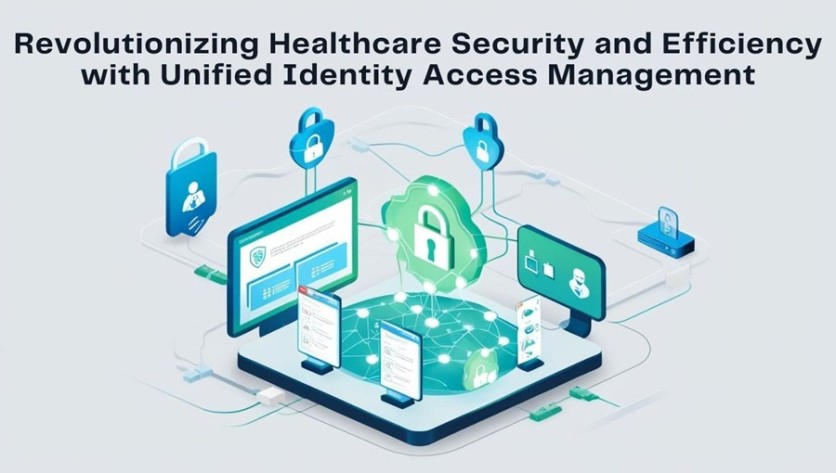
In the realm of healthcare technology, the challenge of securing digital identities has become more pressing than ever. Srikanth Gurram's innovative framework for Unified Identity Access Management (IAM) offers a transformative approach, tackling both the security and operational hurdles faced by healthcare institutions. This framework promises to redefine how sensitive patient data is accessed and managed, ensuring both security and efficiency are maintained across various healthcare systems.
The Rise of Digital Healthcare: A Need for Stronger Security
As healthcare institutions shift to digital platforms, securing sensitive patient data has become a growing concern. A study by Yamin and Alharthi highlights that while electronic health records (EHR) systems enhance administrative efficiency, they also increase the risk of unauthorized access. To address these challenges, the Identity and Access Management (IAM) framework proposes centralizing identity management. This approach provides a consistent, streamlined security model that reduces vulnerabilities and improves user experience for healthcare providers, ensuring that access to patient data is both secure and efficient in the digital healthcare landscape.
Enhancing Security and Compliance
A key challenge for healthcare organizations is ensuring compliance with stringent regulations such as HIPAA and GDPR while safeguarding sensitive data. The adoption of IAM systems ensures that robust security protocols, including multi-factor authentication and Single Sign-On (SSO), are uniformly applied across all systems. By centralizing authentication methods, healthcare institutions can significantly reduce vulnerabilities, including unauthorized access and insider threats. IAM solutions not only simplify access management but also strengthen the overall security posture of healthcare organizations, as demonstrated by reduced security-related incidents and faster incident response times.
Improving Clinical Workflow Efficiency
The integration of IAM solutions directly impacts the daily workflows of healthcare professionals. It highlights the substantial improvements observed in healthcare facilities after the implementation of unified IAM, particularly in clinical settings where time management is crucial. By reducing the time spent on authentication tasks, IAM systems enable healthcare professionals to spend more time with patients. Role-based access control further enhances this by ensuring that individuals only access the data they need for their specific roles, thus streamlining workflows and improving overall clinical efficiency.
Automating Processes for Greater Operational Efficiency
Another groundbreaking benefit of unified IAM is its ability to automate identity management processes, resulting in significant cost savings and efficiency improvements. Healthcare facilities using automated IAM solutions have seen a reduction in administrative overhead, particularly in tasks such as user provisioning and de-provisioning. With these automation capabilities, the time and resources spent on managing access rights are minimized, allowing IT teams to focus on more strategic initiatives. As a result, healthcare organizations can allocate their resources more effectively, reducing operational costs while ensuring secure and compliant access to patient data.
Integrating Legacy Systems with Modern Platforms
One of the most significant challenges in healthcare technology management is the integration of outdated legacy systems with modern platforms. His IAM framework addresses this by serving as an integration layer that allows organizations to modernize their technology infrastructure without sacrificing security. IAM solutions bridge the gap between old and new systems, enabling healthcare institutions to maintain operational continuity during the transition period while ensuring that all systems are secure and compliant. This flexibility not only reduces costs but also minimizes disruption, making technological transitions smoother and more manageable.
A Vision for the Future
The transformative potential of Unified Identity Access Management in healthcare cannot be overstated. By centralizing identity management, automating processes, and ensuring seamless integration across platforms, IAM systems offer a comprehensive solution to the growing security challenges in healthcare. As digital transformation continues to reshape the healthcare landscape, His framework serves as a crucial tool for enhancing both security and efficiency in healthcare organizations, ensuring that these institutions can deliver high-quality patient care in a secure and efficient environment.
In conclusion, the adoption of unified IAM systems represents a pivotal moment in healthcare security and operational management. Srikanth Gurram's innovative framework is poised to be at the forefront of this revolution, offering a scalable, efficient, and secure solution to the complex challenges faced by healthcare organizations. By continuing to evolve with technological advancements, IAM will remain a cornerstone of healthcare security and efficiency, supporting the sector's mission to provide superior patient care in an increasingly digital world.
ⓒ 2025 TECHTIMES.com All rights reserved. Do not reproduce without permission.




